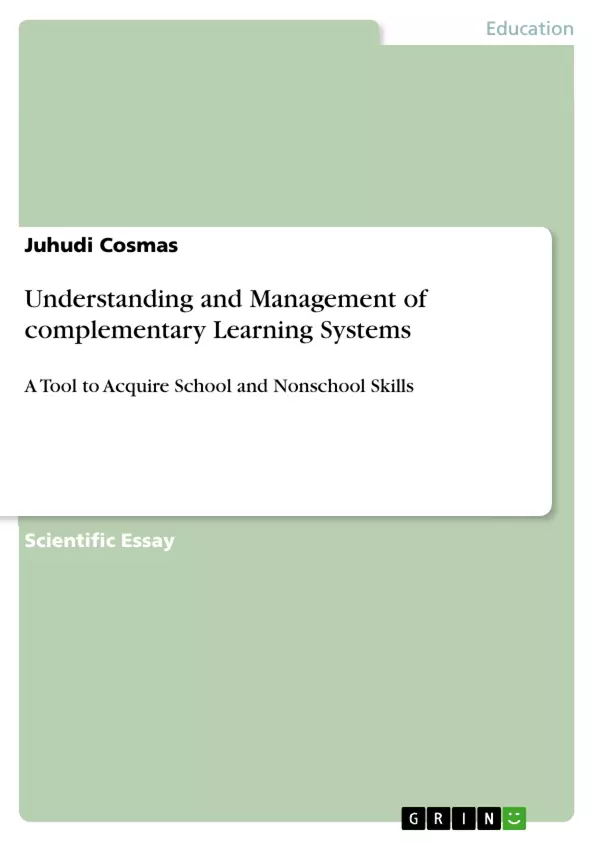This paper introduces the concept of complementary learning systems as a critical tool for educators, teachers, parents and community members in learning process. It discusses features of complementary learning systems; success of complementary learning systems; complementary learning systems and family involvement; action agenda to sustain complementary learning systems; and complementary learning and out-of-school-time programmes. Finally, it concludes by pointing out some suggestions on policies and practices.
Inhaltsverzeichnis (Table of Contents)
- Conceptualization of Complementary Learning Systems
- Features of Complementary Learning Systems
Zielsetzung und Themenschwerpunkte (Objectives and Key Themes)
This text explores the concept of complementary learning systems, aiming to provide educators, teachers, parents, and community members with a comprehensive understanding of its importance and application. The document highlights the crucial role of complementary learning in ensuring children acquire the skills necessary for success in both school and life.
- The importance of a systemic approach to learning, encompassing both school and nonschool supports
- The interconnectedness of learning contexts, such as home, early childhood settings, and school
- The benefits of complementary learning for learners and communities through integrated and holistic programming
- The potential of complementary learning to address achievement gaps and the challenges faced by disadvantaged children
- The essential features of complementary learning systems, including access to resources, family involvement, and a comprehensive range of supports
Zusammenfassung der Kapitel (Chapter Summaries)
Conceptualization of Complementary Learning Systems
This chapter defines and explains the concept of complementary learning systems. It emphasizes the need for a systemic approach that integrates school and nonschool supports to ensure all children acquire essential skills. The chapter highlights the interconnectedness of learning contexts, including home, early childhood settings, and school, and emphasizes the importance of aligning resources to maximize efficiency and opportunities for all children.
Features of Complementary Learning Systems
This chapter delves into the key features of complementary learning systems. It emphasizes the importance of ensuring access to complementary learning for all children, especially disadvantaged ones. The chapter also highlights the crucial role of families in learning and the need for a systemic approach to family involvement. The chapter further discusses the importance of providing a comprehensive range of supports from birth through adolescence, including home visiting, early childhood programs, after-school activities, and health and economic supports. It also stresses the need to focus on a range of academic, social, and behavioral skills to address achievement gaps and build essential competencies.
Schlüsselwörter (Keywords)
Complementary learning systems, school and nonschool supports, systemic approach, integrated and holistic programming, disadvantaged children, family involvement, access to resources, comprehensive supports, achievement gaps, social and behavioral skills, educational equity.
- Citation du texte
- Juhudi Cosmas (Auteur), 2012, Understanding and Management of complementary Learning Systems , Munich, GRIN Verlag, https://www.grin.com/document/197103



